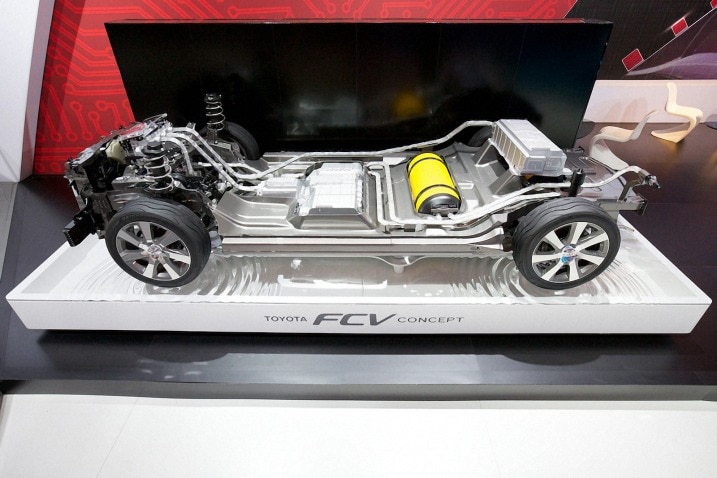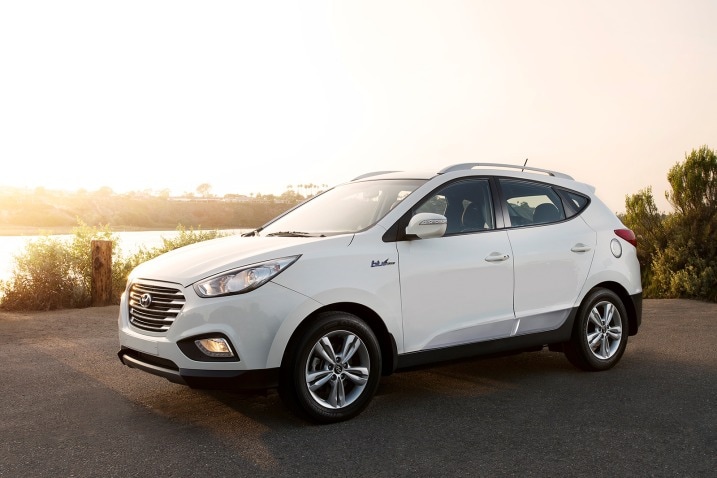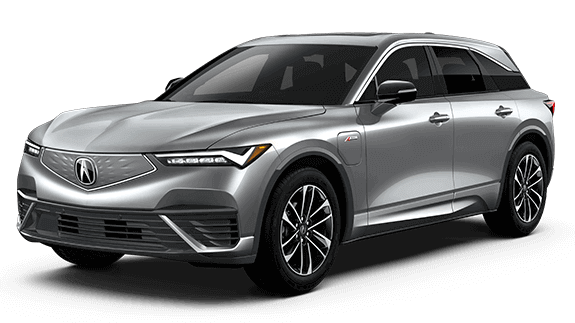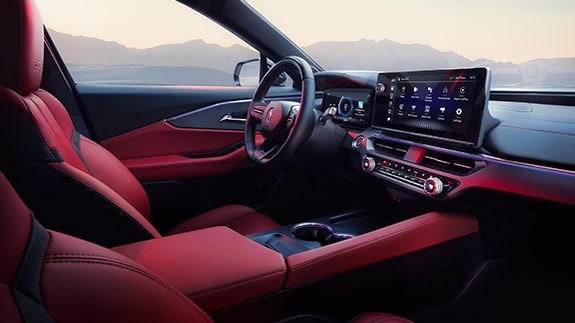1. What's the Secret of Fuel Cells?
"Hydrogen fuel-cell vehicle" sounds pretty exotic, but in reality it's just an electric car that replaces the bulky, heavy and expensive grid-charged battery pack with a relatively small, lightweight and expensive electrochemical system that produces electricity onboard.
The fuel cell is the system's power plant. In it, hydrogen gas drawn from an onboard pressurized tank reacts with a catalyst, typically made of platinum. The process strips the electrons from the hydrogen, freeing them to do their thing — which is to be the electricity that flows through the electric motor to power the car.
After their job is done, the electrons return to the fuel cell, where they are reunited with the parent hydrogen in the presence of oxygen pulled in from the ambient air. They meet in a ratio of two atoms of hydrogen to one of oxygen. Presto! It's H2O, or water. The water helps cool down the stack (all those excited molecules make a lot of heat) before it then dribbles out of the vehicle's tailpipe as a combination of steam and distilled water.
One fuel cell doesn't produce all that many electrons, so automakers bind scores of the flat, rectangular cells together into a fuel-cell stack to get enough juice to power a car or truck. The stack acts much like a battery, releasing electricity in a constant flow to power the vehicle's electric motor and auxiliary electronics.
Fuel-cell stacks typically are sized to produce just slightly more power than the vehicle can use under normal acceleration and cruising conditions. The excess, augmented by electricity from the vehicle's regenerative braking system, is stored in a small lithium-ion battery for use when the vehicle needs an extra burst of power.
Once the fuel-cell stack does its magic, the vehicle is just like any other electric-drive vehicle on the road, running in near silence with loads of acceleration, thanks to the electric motor's hefty torque output.



 by
by 
